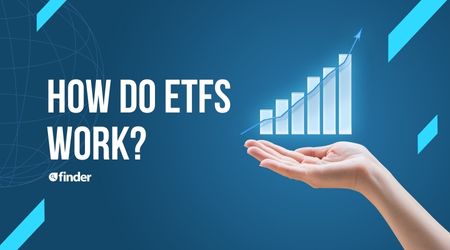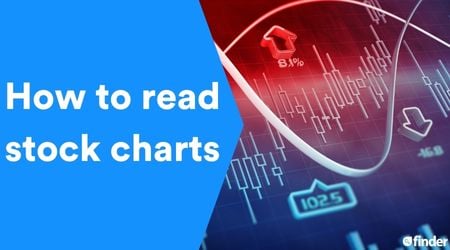Inverse ETFs let investors profit when markets fall or hedge against losses. Unlike regular ETFs, they move opposite to a specific index or asset. While they offer short-term opportunities, they’re complex and carry risks. This guide explains how inverse ETGs work in Canada, regulatory considerations and tips for choosing the right fund.
What is an inverse ETF in Canada?
An inverse ETF, also known as a short ETF or bear ETF, is a type of exchange-traded fund (ETF) designed to increase in value when the index or benchmark it tracks goes down. These funds use derivatives like swaps or futures to generate daily returns that move opposite to the performance of a specific index, such as the S&P 500.
There are two main types of inverse ETFs available in Canada:
- One-to-one inverse ETFs (-1x). These inverse ETFs are designed to move in the opposite direction of a particular index’s daily performance. So if the S&P 500 goes down 3% today, a -1X inverse ETF betting against it would rise 3%.
- Leveraged inverse ETFs (-2x, -3x). These inverse ETFs are designed to produce daily returns that multiply the performance of a given index in the opposite direction. Leveraged ETFs typically have a multiplying factor, such as three times (3x), in their names. If the S&P 500 goes down 3%, a -3x leveraged inverse ETF betting against it would rise 9% (3 x 3%).
Key features of inverse ETFs
Inverse ETFs have several unique features that set them apart from traditional ETFs.
Opposite market movement
Inverse ETFs are designed to move in the opposite direction of a specific index or asset. If the underlying index declines, the inverse ETF rises, and vice versa. This allows investors to gain from market declines without shorting individual stocks.
Daily resetting and rebalancing
Inverse ETFs reset their performance targets and adjust their holdings daily to maintain the desired inverse exposure. This keeps the ETF aligned with its daily objective, but holding it for multiple days can lead to compounding effects that may reduce returns compared with the expected inverse performance over longer periods.
Accessible
Inverse ETFs can be bought and sold through most brokerage accounts, just like traditional ETFs. They’re traded on public exchanges, making them easy to access for both beginner and experienced investors.
Active management
Inverse ETFs are actively managed and rebalanced daily to meet their target returns. Fund managers adjust derivative positions to maintain inverse exposure, which requires ongoing monitoring and makes them more hands-on than passive ETFs.
Use of derivatives
Inverse ETFs rely on financial derivatives such as futures, swaps and options to produce inverse performance relative to a benchmark index. These instruments allow the fund to achieve the opposite market movement efficiently, but they also introduce additional risks, including counterparty and liquidity risk.
Benefits of investing in inverse ETFs?
There are several reasons why you should consider investing in inverse ETFs, including:
- Profit in a falling market. The key benefit of inverse ETFs is that they allow you to make money when the market goes down. This makes them a useful hedge against market downturns, allowing you to counteract your losses from other investments when stock prices fall.
- Easier than shorting. Inverse ETFs allow you to bet against the market like you would when short-selling stocks. But unlike with shorting a stock, you don’t need to borrow any shares; you simply invest your own money.
- Can be held in registered accounts. Inverse ETFs can also be held in registered accounts, such as a TFSA or RRSP. This allows you to make the most of tax advantages that apply to your investment income.
- Available for a wide range of assets and markets. You can invest in inverse ETFs across an extensive range of assets and market sectors, not just the S&P 500. It’s easy to access inverse ETFs for a host of major stock market indices as well as bonds, commodities and cryptocurrencies.
- Hedge your portfolio. Inverse ETFs allow you to offset risk in your portfolio without selling your long-term investments. Instead of selling stocks during a downturn, you can temporarily hold an inverse ETF to balance out market losses.
- Easy to trade. Inverse ETFs trade on regular stock exchanges just like ordinary ETFs. This means you can buy and sell them through any brokerage account, making them accessible even for beginners.
Risks of investing in inverse ETFs
While they have their advantages, there are also several risks you should consider before investing in inverse ETFs, such as:
- The market could move against you. There’s no guarantee that the market will move the way you predict. So if you invest in an S&P 500 inverse ETF and the S&P 500 goes up, you’ll suffer a loss.
- They’re only designed for short-term use. Inverse ETFs are rebalanced daily, making them intended for short-term trading strategies. Holding them for more than one day can lead to unexpected results because daily returns compound and fees can affect performance, especially in volatile markets.
- Brokerage fees. Inverse ETFs are designed to be bought and sold much more often than regular ETFs. You’ll need to pay commission fees when you place a buy or sell order, so make sure you factor this additional cost into your calculations.
- High management fees. Inverse ETFs also have higher management fees than regular ETFs because they’re actively managed and rebalanced daily. For example, while some index ETFs track Canadian stocks and have management expense ratios of less than 0.1%, it’s common for inverse ETFs to have management fees of 1% or more.
- Leveraged inverse ETFs can amplify your losses. Your losses can be even greater if you invest in leveraged ETFs because these are designed to magnify the daily performance of a given index. That means investors can expect higher rewards but also bigger losses.
- Counterparty relationships. If the other party in a derivative contract, such as a financial institution executing a swap, fails to meet its obligations, the ETF could lose money even if the market moves in the predicted direction.
- Market liquidity constraints. Some inverse ETFs may have low trading volume or thin liquidity in the underlying derivatives, making it harder to enter or exit positions at desired prices and potentially increasing trading costs.
10 inverse ETFs in Canada investors should consider
To invest using inverse ETFs, you must first have a discount brokerage account. Then, it’s time to consider the options. To get started, here are 10 of the best-known inverse ETFs in Canada.
ProShares UltraPro Short QQQ
- Ticker: SQQQ
- 1-year return: -55.50%
- Assets under management: $2.50 billion
- Expense ratio: 0.95%
This ETF is designed to move in the opposite direction of the Nasdaq-100 Index. It offers -3x daily short leverage on nonfinancial equities like US Treasury Bills, so this ETF is best for investors with a high risk tolerance who aren’t looking to hold onto stocks for the long run.
ProShares Short S&P 500
- Ticker: SH
- 1-year return: -12.25%
- Assets under management: $963.85 million
- Expense ratio: 0.89%
Designed to perform in the opposite direction of the S&P 500, this ETF can be useful during bear markets. Results are delivered over a single trading session, with exposure resetting daily. The ProShares Short S&P 500 might be suitable for investors who want to bet against large-cap US equities and who don’t plan to hold their stocks in the long run.
ProShares Short QQQ
- Ticker: PSQ
- 1-year return: -19.14%
- Assets under management: $684.00 million
- Expense ratio: 0.95%
This ETF tracks the 100 largest nonfinancial securities on the Nasdaq. Results are delivered over a single trading session, with exposure resetting daily. The PSQ may be suitable for short-term investors who want to hedge against their Nasdaq investments or bet against top Nasdaq nonfinancial stocks.
ProShares UltraShort S&P 500
- Ticker: SDS
- 1-year return: -25.74%
- Assets under management: $370.69 million
- Expense ratio: 0.91%
This ETF is designed to move in the opposite direction of the S&P 500 Index. It offers -2x daily short leverage on large-cap US equities like US Treasury Bills. This ETF is best for investors with a high risk tolerance who aren’t looking to hold onto stocks for the long run.
ProShares UltraPro Short S&P 500
- Ticker: SPXU
- 1-year return: -39.13%
- Assets under management: $461.25 million
- Expense ratio: 0.90%
This ETF is designed to move in the opposite direction of the S&P 500 Index. It offers -3x daily short leverage on large-cap equities. This ETF is best for investors with a high risk tolerance who aren’t looking to hold onto stocks for the long run.
Direxion Daily S&P 500 Bear 3X Shares
- Ticker: SPXS
- 1-year return: -37.65%
- Assets under management: $344.91 Million
- Expense ratio: 1.02%
This ETF is designed to deliver -3x the daily performance of the S&P 500, which contains some of the biggest blue-chip companies in America. Investors could use this ETF to hedge against existing S&P 500 investments or bet against large-cap, blue-chip companies in the US.
ProShares UltraPro Short Dow 30
- Ticker: SDOW
- 1-year return: -25.27%
- Assets under management: $200.79 million
- Expense ratio: 0.95%
This ETF is designed to move in the opposite direction of the Dow Jones Industrial Average. It offers -3x daily short leverage on large-cap US equities. This ETF is best for investors with a high risk tolerance who aren’t looking to hold onto stocks for the long run.
Direxion Daily Small Cap Bear 3X Shares
- Ticker: TZA
- 1-year return: -30.78%
- Assets under management: $306.72 million
- Expense ratio: 1.04%
This ETF is designed to move in the opposite direction of the Russell 2000 Index. It offers -3x daily short leverage on small-cap equities. This ETF is best for investors with a high risk tolerance who aren’t looking to hold onto stocks for the long run.
ProShares Short Russell 2000
- Ticker: RWM
- 1-year return: -7.44%
- Assets under management: $158.96 million
- Expense ratio: 0.95%
This ETF is designed to deliver -1x the daily performance of the Russell 2000 Index, which tracks US small-cap stocks. The RWM may be suitable for short-term investors who want to hedge against existing investments or bet against small-cap US stocks.
ProShares Short Dow 30
- Ticker: DOG
- 1-year return: -6.47%
- Assets under management: $114.60 million
- Expense ratio: 0.95%
This ETF aims to move in the opposite direction of an index that invests in American blue chip companies, particularly the Dow Jones Industrial Average. So it may produce strong returns when major American companies in that index experience losses in share price.
However, the index has in recent times been experiencing an overall gain and recently broke records. So, it may be best to monitor this ETF closely before jumping in.
How to choose the best inverse ETFs in Canada
Consider the following factors when comparing inverse ETFs:
Underlying index or asset
Look for an ETF that offers exposure to the index or asset class you want to trade. You should have a strong knowledge of a particular index or asset and the time to analyze it daily before investing in a bear ETF that aims to profit from its decline.
Fees
Inverse ETFs typically have higher management expense ratios (MERs) of 1% or more. Compare fees across funds to find the best value, as high fees can reduce returns, especially for leveraged ETFs held over multiple days.
Leverage and risk tolerance
Work out how much risk you’re willing to accept and whether you want a -1x inverse ETF or a leveraged inverse ETF. Double and triple inverse ETFs are available, providing the potential for greater returns but also greater losses.
Past performance
Check whether the fund has consistently performed in line with its stated objective. Just remember that over several days, the ETF’s returns may differ from the expected inverse of the index because of compounding and market swings. Focus on how accurately the ETF meets its daily target rather than relying solely on longer-term results.
Trading volume and liquidity
Check the ETF’s daily trading volume and assets under management. Low liquidity can result in wider bid-ask spreads, making it more expensive or difficult to buy or sell shares at your desired pace.
Short-term suitability
Inverse ETFs are intended for short-term strategies rather than long-term buy-and-hold investing. Make sure you monitor market movements carefully and have a clear exit strategy.
Who are inverse ETFs best for?
Inverse ETFs are best suited for:
- Experienced investors and traders: People who understand how the underlying index or asset behaves and can actively monitor their positions.
- Short-term tactical strategies: Investors looking to profit from or hedge against anticipated short-term declines in the market or specific sectors.
- Portfolio hedging: Those who want to offset potential losses in other long positions without selling their existing investments.
- Investors with risk tolerance: Because inverse ETFs, especially leveraged ones, can amplify losses, they’re best for those comfortable with higher risk and potential volatility.
- Commodity investors: Inverse ETFs offer a simple way to profit from or hedge against declines in Canadian commodities like crude oil or natural gas. They allow investors to gain downside exposure without trading complex futures contracts and can help take advantage of short-term price swings in volatile markets.
Inverse ETFs aren’t ideal for casual, long-term, buy-and-hold investors because daily compounding and market swings can cause results to differ from the expected inverse over multiple days.
Regulatory considerations for inverse ETFs in Canada
The Canadian Securities Administrators (CSA) oversees securities markets across Canada, including inverse ETFs. Here are some regulations they’ve set for inverse ETFs:
- Mandatory ETF facts disclosure: All inverse ETFs offered in Canada must provide an ETF facts document disclosing investment objectives, fees and expenses, risks and trading information such as bid-ask spreads.
- Risk classification: ETF providers must classify risk using the standardized CSA Mutual Fund Risk Classification Methodology. Leveraged and inverse ETFs generally receive higher risk ratings.
- Derivatives disclosure: Inverse ETFs use derivatives like swaps or futures, and issuers must clearly disclose their use, limits on exposure and the associated risks.
- Suitability obligations for brokerages: Investment dealers regulated by the Canadian Investment Regulatory Organization (CIRO) must assess whether an inverse ETF is suitable for each investor, considering risk tolerance, investment objectives and knowledge of complex products.
- Tax implications: Inverse ETFs are treated like any other security for tax purposes. This means gains or losses are treated as capital gains or losses, so 50% of your capital gains are taxable, while capital losses can be used to offset them. However, some inverse ETFs hold derivatives that produce interest income, which is fully taxable at your marginal rate.
- Collateral and margin requirements: ETF providers must post collateral to support derivative trades. In Canada, this usually involves cash reserves held to meet margin requirements and government securities (like government bonds) as eligible collateral.
Canadian brokerages where you can invest in inverse ETFs
Finder Score for stock trading platforms
To make comparing even easier we came up with the Finder Score. Trading costs, account fees and features across 10+ stock trading platforms and apps are all weighted and scaled to produce a score out of 10. The higher the score, the better the platform—it's that simple.
Bottom line
Inverse ETFs can help you profit when the stock market falls or when a particular sector goes down. But inverse ETF investing is complicated, and the losses can be as big as the potential returns, so it’s not a suitable option for all investors. It’s also not suitable as a long-term strategy.
If you want to invest in inverse ETFs, compare investing platforms before you open an account.
Frequently asked questions
Sources
More guides on Finder
-
7 oil tanker stocks to watch
Want to invest in oil tanker companies? We’ve put together a list of oil tanker stocks you should keep your eye on.
-
4 diamond stocks to watch
Want to invest in diamond companies? We’ve put together a list of diamond stocks you should keep your eye on.
-
8 sports stocks to watch
Want to invest in sports companies? We’ve put together a list of sports stocks you should keep your eye on.
-
What is a stop-loss order?
Learn how a stop-loss order can help you limit losses or lock in profits when trading.
-
Best renewable energy stocks
These are the best renewable energy stocks to buy now in Canada.
-
10 gold stocks to watch
Check out some of the best gold stocks to buy right now in Canada based on company performance.
-
Best stocks to buy right now in Canada
Finder’s unique algorithm found the 20 best TSX stocks to buy right now.
-
Guide to 10 of the best ETFs in Canada
Learn how to choose the best ETFs to buy right now in Canada.
-
What is micro-investing?
Round up your spare change into big bucks with Canadian apps designed for saving, depositing and investing.
-
Best investment accounts in Canada
Compare defensive and growth investments to find the best investment accounts in Canada for you.








